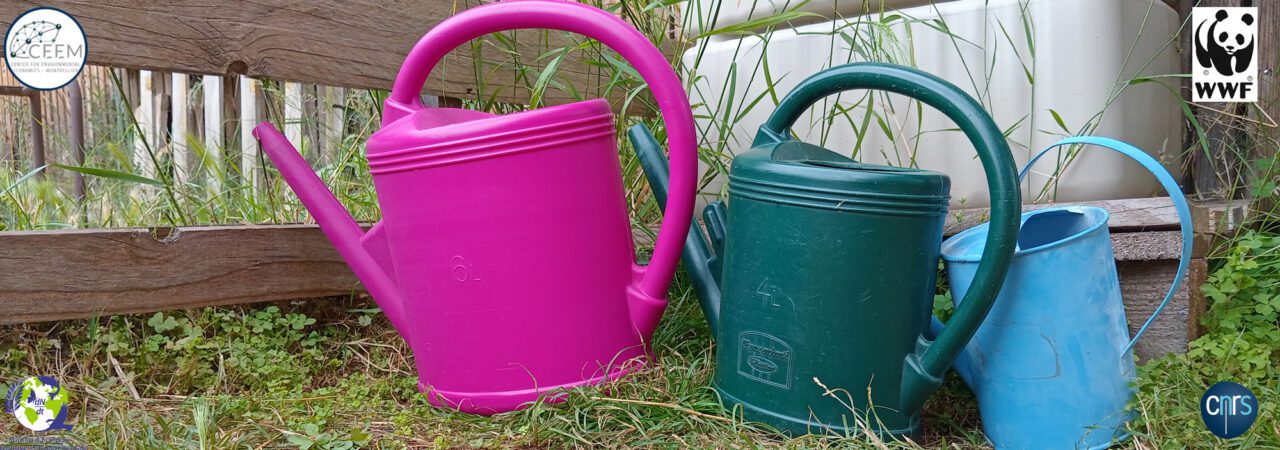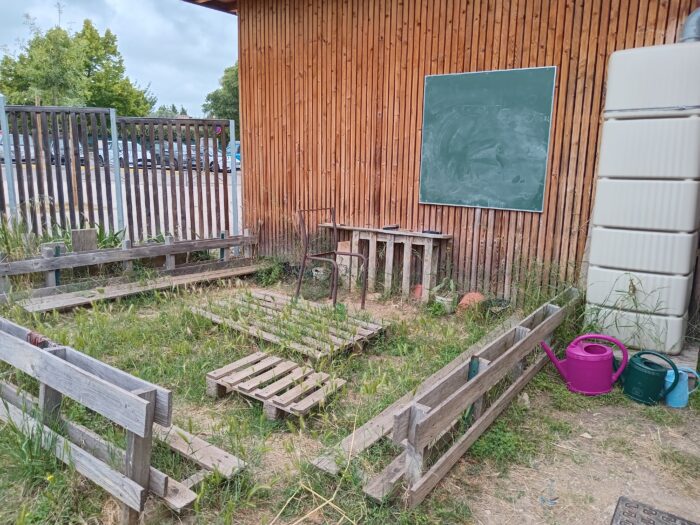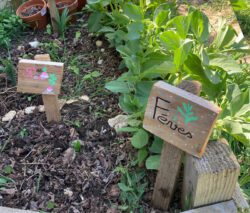
Three members of the CEE-M are involved in this action research conducted jointly with the NGO WWF France and Eval-Lab, which constitutes the first national study on educational gardens in primary schools.
To learn more about this project and educational gardens, two testimonies are presented: that of Simon Briole, economist at CEE-M, holder of the junior chair at the University of Montpellier and participating in the research team onthe Educational Garden project, and that of Caroline Le Roux, primary school teacher in Montarnaud, involved in her school’s educational garden, who responded to the call targetingprimary schools as part of this project.
Interview with Simon Briole, Economist at CEE-M
- A call for projects was launched in April 2024 on educational gardens. Can you explain the objectives of this project
Several studies show that developing a connection to nature at a young age is correlated with better environmental practices in adulthood. The objective of our project is to identify solutions allowing to develop a sense of belonging to nature from an early age. Educational gardens appear to be a relatively accessible solution to allow all children, regardless of their place of residence or socioeconomic background, to interact and connect with nature through numerous educational and recreationalactivities organized throughout the year at school.
At the initiative of WWF France, we aim to evaluate the effects of educational gardens on the environmental practices and perceptions of pupils, parents, and teachers, as well as their well-being, to conclude on their effectiveness as a actionable tool for educational policies.
- Have enough schools expressed interest to move to the second phase of the project?
About150 primary schools have expressed interest in this project to date. Ideally, we would like to recruit even more schools in orderto have as much social diversity as possible and to measure accurately the effects of our intervention. Schools have until September 2024 to express their interest. If they wish to participate, they just need to fill ina short form at the following link: https://evallab.limesurvey.net/783556?lang=fr
We call on all schools, whether they have a garden or not, to participate in this unique study. We will also provide schools with aggregated results that can be incorporated into their educational projects.
- If yes, what can you say about the first interactions you had with school principals?
We feel a particularly strong enthusiasm for this study. Indeed, many schools have educational gardens and would like to know their effects on students. Municipalities are also very interested; for example, the city of Lunel recently hosted us for a day to visit some schools and see how they use their gardens.
- What are the selection criteria for a school to be included in this national study?
There are no selection criteria, except that they must be primary schools. We plan to evaluate the effects of educational gardens at all levels, from grades 1 to 4 (CP to CM2).
- This study is also an opportunity to develop and promoteeducational gardens. How do you plan to support schools?
As part of this action research, we will offer a set of schools activity ideas to carry out with students throughout the year related to the WWF France’s School Gardener project to develop or boosttheir educational gardens.
Questions to Caroline Le Roux, Teacher at the Montarnaud Primary School (Hérault)
- How was the educational garden at Montarnaud Primary School created?
Initially, the garden was created in the 2000s and managed by the teacher of the ULIS class. The school renovations underwent in 2012were an opportunity to increase the garden area andto develop it gradually , moving to a collective management of the garden, shared by several classes in the school. Furthermore, we are greening several areas of the school, including the yard layout with ,small terraces, trees, and planters. Coming from a priority education area where I worked with the ecologists of Euzières, I was keen to continue learning activities related to the outdoors, soil, water, and plants.
- What motivated you to get involved in this educational garden?
Today, nearly half of the team, i.e. 9 out of 18 classes, offer weekly, seasonal or occasional gardening sessions to pupils from grade 1 to 4 (CP to CM2,. There are several objectives including the acquisition of know-how, skills, and knowledge. Thus, we aim for autonomy, initiative-taking, living together, some technical gestures, observing fauna and flora, the life cycle, plant needs, soil composition… But above all, it seems to me that what is common to all teachers who come to the garden is reconnection with nature, with the world around us.
- Can you explain the collective management of the garden by several classes?
At the beginning of the year, interested classes divide among themselves the 9 garden plots and the time slots available. We make a tools’ inventory,then every classroom involved manages itsgardening timeas itwishes. Each student has itspair of gloves which is listed in the school supplies list at the beginning of the year. A board is presentin the garden, as well as a gathering area with reclaimed pallets. We gather there at the beginning and end of the session.
 Depending on the year, we place a collective order for seeds, soil, tools, or we manage our small purchases with our respective class cooperatives. We can also ask families for leftover seed packets, cuttings, or even collect pits or seeds! Sometimes we can call on garden centres for donations, but it’s quite rare. We regularly call on the Gignac Agricultural High School to buy plants. This year, the town’s elders helped us by teaching us how to take cuttings and providing mulch. In the garden plots, we find radishes, lamb’s lettuce, spinach, strawberries, fava beans, peas, chard, but also flowers. A few years ago, with the grade 2 to 4 (CE1/CM2) classes, we created an aromatic spiral that has been evolving since.
Depending on the year, we place a collective order for seeds, soil, tools, or we manage our small purchases with our respective class cooperatives. We can also ask families for leftover seed packets, cuttings, or even collect pits or seeds! Sometimes we can call on garden centres for donations, but it’s quite rare. We regularly call on the Gignac Agricultural High School to buy plants. This year, the town’s elders helped us by teaching us how to take cuttings and providing mulch. In the garden plots, we find radishes, lamb’s lettuce, spinach, strawberries, fava beans, peas, chard, but also flowers. A few years ago, with the grade 2 to 4 (CE1/CM2) classes, we created an aromatic spiral that has been evolving since.
When the plants thrive, they end up in our cooking workshop, contributing to discovering new flavors! This year, our rosemary and lavender cuttings allowed us to green the planters in the library, opening a partnership with the town’s elders.
- Why did you respond to the call for this project, and what do you expect from it?
Reflecting together by combining other ideas, knowledge, and experiences is always enriching for confirming practices, questioning, and renewing oneself.

